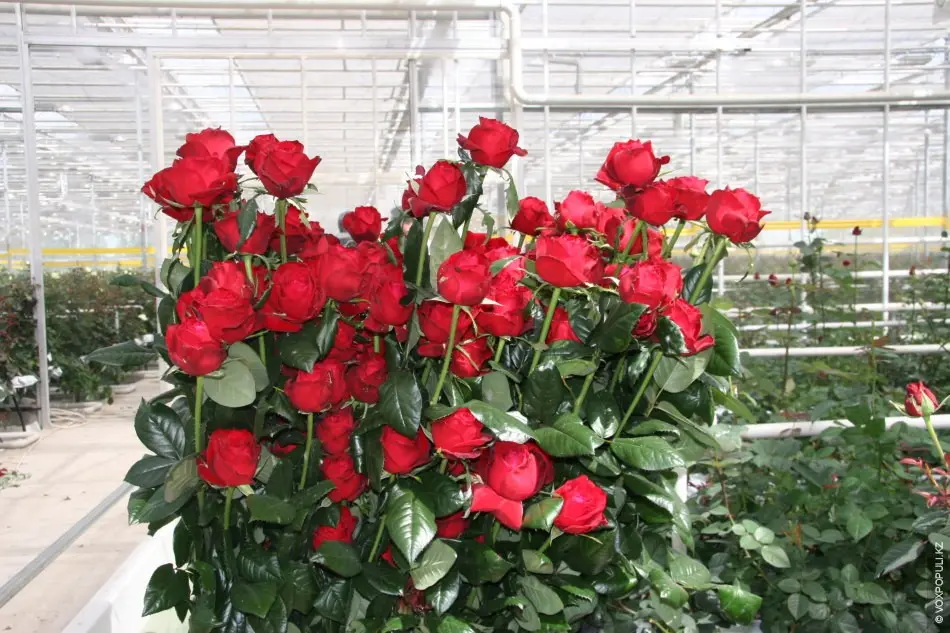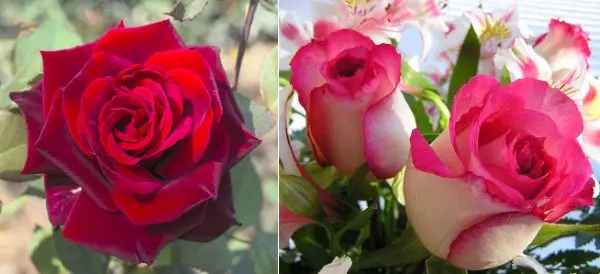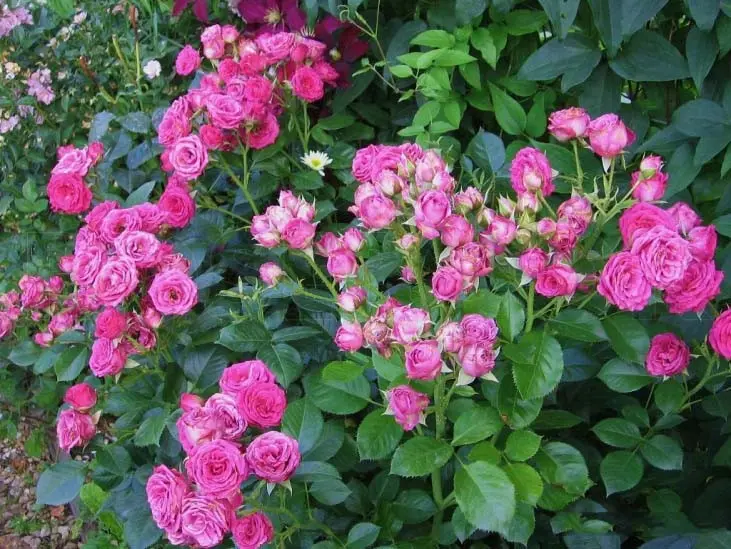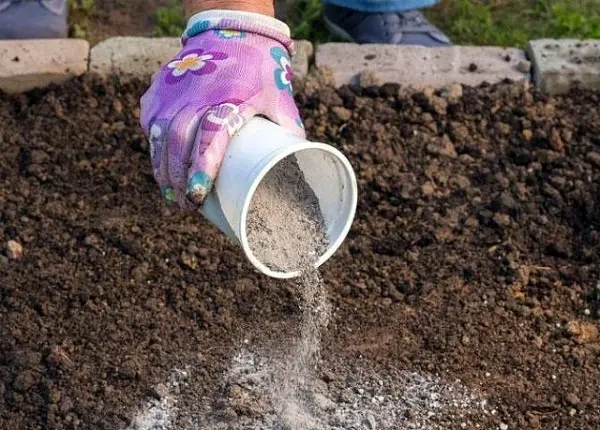Contents
Holland has long taken a leading place in floriculture, Dutch breeders are constantly creating amazing varieties of the most popular ornamental plants, roses and tulips are especially famous. Dutch roses do not necessarily come from this country, they are grown in many countries of the world, mostly warm, and from there they fly to us cut off to bring joy and amaze with their exquisite beauty. Dutch varieties are also grown in our nurseries, usually in protected ground, but many flower growers want to settle them in their summer cottages, making every effort to do this, the stunning beauty of roses is worth it.
Characteristics and features
Dutch roses are represented by a huge variety of varieties, they differ in color, size, shape of buds and petals, aroma, size and color of leaves, the number of flowers on one shoot. An amazing palette of colors and the ability to maintain an attractive appearance for a long time allow you to choose a bouquet for any occasion and please any person with it. All of them are distinguished by a long period of time during which cut roses remain in excellent condition, as a rule, at least 2 (and sometimes more) weeks. Recently, potted roses have become more and more popular, which many lovers are trying to plant on the site.
It must be said that Dutch roses are much more tender than domestic varieties, they are not so winter-hardy, a simple shelter for the winter does not save their tender roots from freezing. But of course, it all depends on the region – in the south they grow well, and in the north they need to be given more attention, to create more suitable conditions for growing in open ground. It is best to buy seedlings in a nursery, plant noble varietal roses on your site. But you can grow own-rooted roses, that is, those that have developed from a rooted cutting.

You can take cuttings from a gift bouquet or choose a beautiful rose in the store with a fresh, intact stem without the slightest sign of wilting and buy it specifically for breeding. At home, the stem must be cut into pieces with 2 – 3 healthy, fully formed buds, cuttings should be made from them and rooted in one of the known ways.
Thus, you can get an exquisite rose in your garden. But this process can be long and not always successful – suppliers of cut roses often treat them with special preparations that slow down all life processes in order to prolong their good condition and maintain their beautiful appearance for a long time. These drugs also slow down the rooting process. There is one more nuance, we buy an unknown flower in the store, which may turn out to be a hybrid that does not leave the characteristics of the variety to its offspring. Such a rose can be rooted and grown, but this does not mean that its flower will be just as beautiful. Buying a seedling is easier, but more expensive.
Video “How to grow bushes”
From the video you will learn how to grow rose bushes.
Top Grades
The works of Dutch breeders are well known to our flower growers. We grow very famous varieties of roses, for example, burgundy roses “Grand Prix” with a large flower (up to 12 cm in diameter) on a long stem (from 70 cm and more than 1 meter). Cut roses of this variety can stand in a vase for 2-3 weeks, their flowers with a large number of petals, which can be up to 40 pieces, do not change their appearance at all for more than 2 weeks. This can be said about many varieties, for example, the snow-white flowers of “Avalanche” are also in no hurry to wither or dry out after cutting.
Flower growers who want to grow similar flowers on their plots are usually interested in their other characteristics. So lemon “Ilios” and red “El Toro” with unsurpassed decorative qualities attract with their ability to easily endure temperature fluctuations and adapt to climatic changes.
The spray rose of the Lovely Lydia variety impresses with a huge number of inflorescences. Its small, only 3 cm in diameter, dark pink flowers with 30 – 35 petals just pour over the entire bush. A lot of inflorescences are also formed by the pale pink “Grace” with medium-sized flowers of the same structure.
Delicate lilac-pink roses of the Aqua variety are grown in summer cottages, their beautiful flowers with a diameter of at least 11 cm proudly rise on a thornless stem. And “Black Baccara” and “Terracotta” amaze with the color of their flowers – the burgundy pointed petals of the “Black Baccarat” variety are outlined in black, and “Terracotta” painted its buds in two colors at the same time: coral-orange and pale pink.
Features of landing
It is quite possible to grow roses of the Dutch selection on your site, people do it even beyond the Arctic Circle. Seedlings are best planted in a permanent place in late spring, so that they take root calmly, and do not experience stress when the temperature drops. A place that is necessarily sunny and protected from the north wind should be prepared in advance. It is necessary to provide the future bush with loose, nutritious, slightly acidic (as close to neutral) soil as possible. If necessary, peat or sand is added to the soil to make it breathable.  It is best to fertilize with compost or rotted manure. The place prepared for roses should not be too wet, water should not be allowed to flow into it, and groundwater should not come close to the surface.
It is best to fertilize with compost or rotted manure. The place prepared for roses should not be too wet, water should not be allowed to flow into it, and groundwater should not come close to the surface.
Before planting, seedlings should be inspected, damaged or dried parts of the shoots and roots should be removed, and then immersed in water for several hours so that the roots are saturated with water. It is especially important to moisten the roots well if they were sent (transported) without a container.
If the summer resident dared to propagate roses by cuttings, then from the middle part of the stems you need to cut pieces with 2 – 3 buds. The lower cut is made under the bud itself, beveling it at an angle of 45 degrees, and the upper one is cut straight, departing from the upper bud by 0,5 cm. The lower leaves are removed, and the upper one is shortened by half. The upper cut is treated with wax or paraffin, and the lower cut is dipped in a solution that stimulates root growth.
You can root cuttings in water or soil. Cuttings planted in cups are usually covered with a jar or bag to create a greenhouse effect. After 2 – 3 weeks, sprouts from the kidneys may appear, this indicates the beginning of root formation. At this stage, the cuttings are transplanted from the water into the ground. Plants obtained in this way are called own-rooted, they are recommended to be grown in protected ground, but there are many examples of comfortable growth on the street.
Growing Requirements
In the spring, nitrogen fertilizing is done to roses; three weeks before flowering, they are fertilized with potassium-phosphorus fertilizers. They respond well to watering with a solution of slurry. But it is advisable not to pour it just under the bush, but to make a small groove around it, pour fertilizer there after watering the rose, and the next day you can loosen the ground around the bush. In the second half of summer, all top dressing is stopped so that the rose has time to prepare for wintering.
Watering should be moderate, to prevent waterlogging of the roots or stagnant water. Water is best used settled and heated by the sun to room temperature. It is watered under a bush, it is not desirable that water falls on the above-ground part of the plants, it is especially necessary to protect the buds.
For the prevention of diseases, it is necessary to treat plants with special means (“Aktara”, “Fitoverm”, “Skor”, “Fundazol”) or infusion of mullein and wood ash, which protects well from powdery mildew. Sanitary pruning is done all summer, while examining the entire plant in order to notice any changes in time.
It is very important to cover the roses well for the winter, and the first winter is the most important for further growth, since the plant has not yet fully grown and acclimatized. It makes sense to first cover the roses with spruce branches, and on top with a non-woven fabric.
Video “Growing from cuttings”
From the video you will learn how to grow a whole plantation of roses from cuttings.









